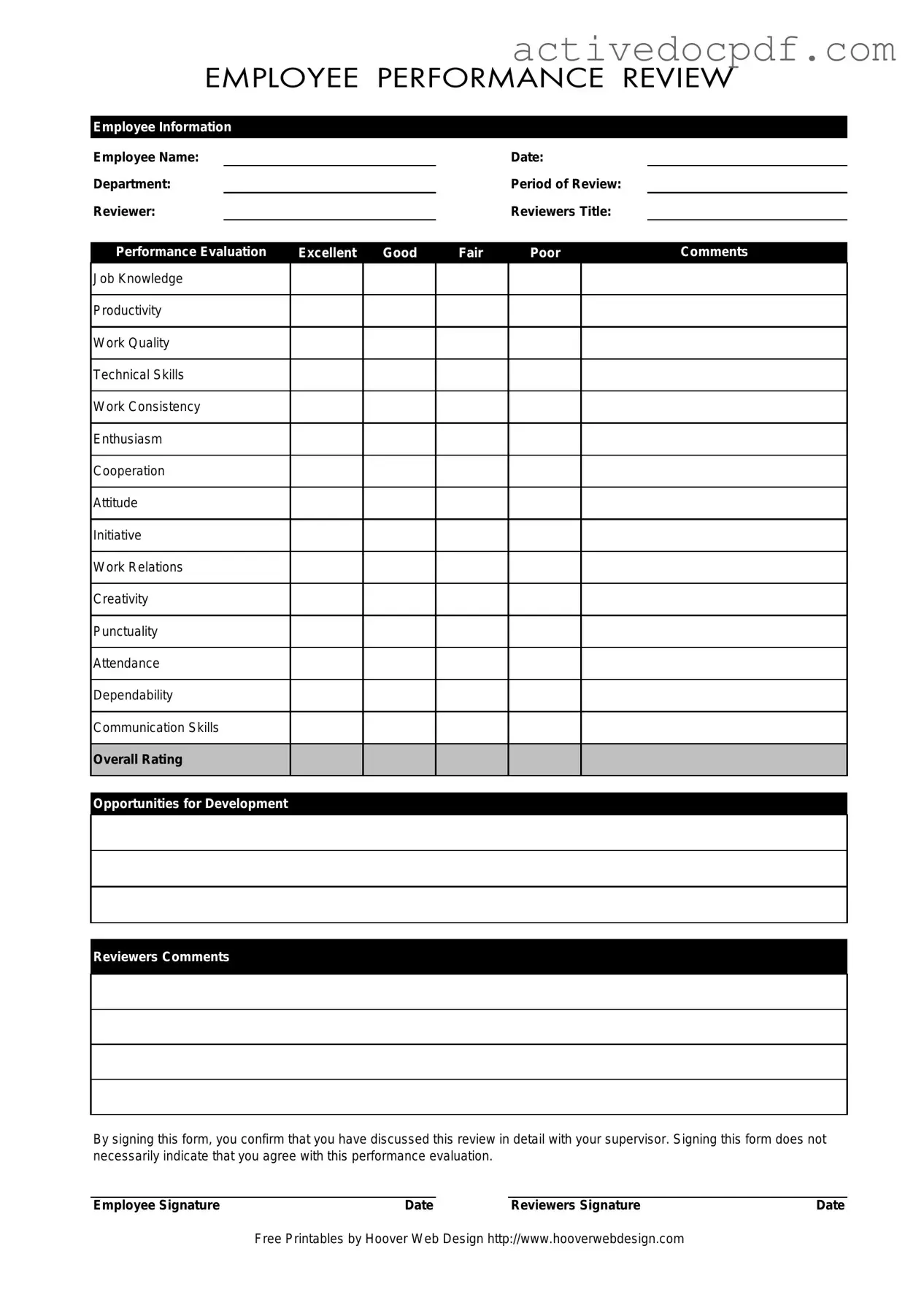Free Employee PDF Form
The Employee form serves as a vital tool for assessing an employee's performance over a specified period. It captures essential information such as the employee's name, department, and the reviewer's details, along with a comprehensive evaluation of various performance metrics. This form not only facilitates constructive feedback but also encourages open dialogue between employees and supervisors regarding performance and development opportunities.
Edit Form Online
